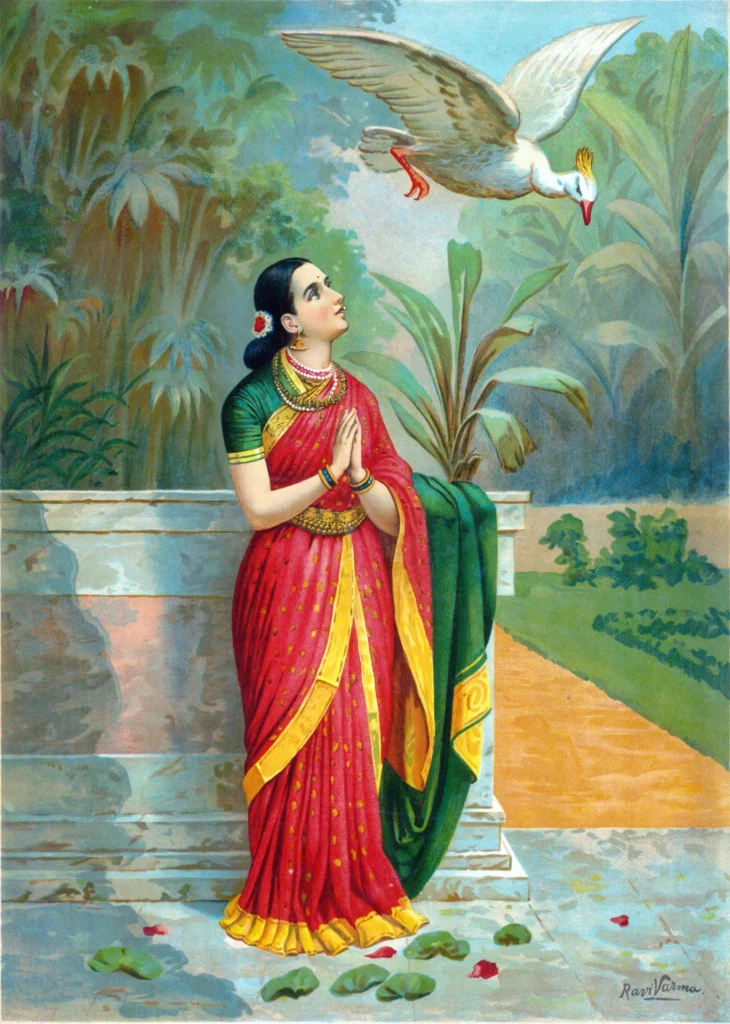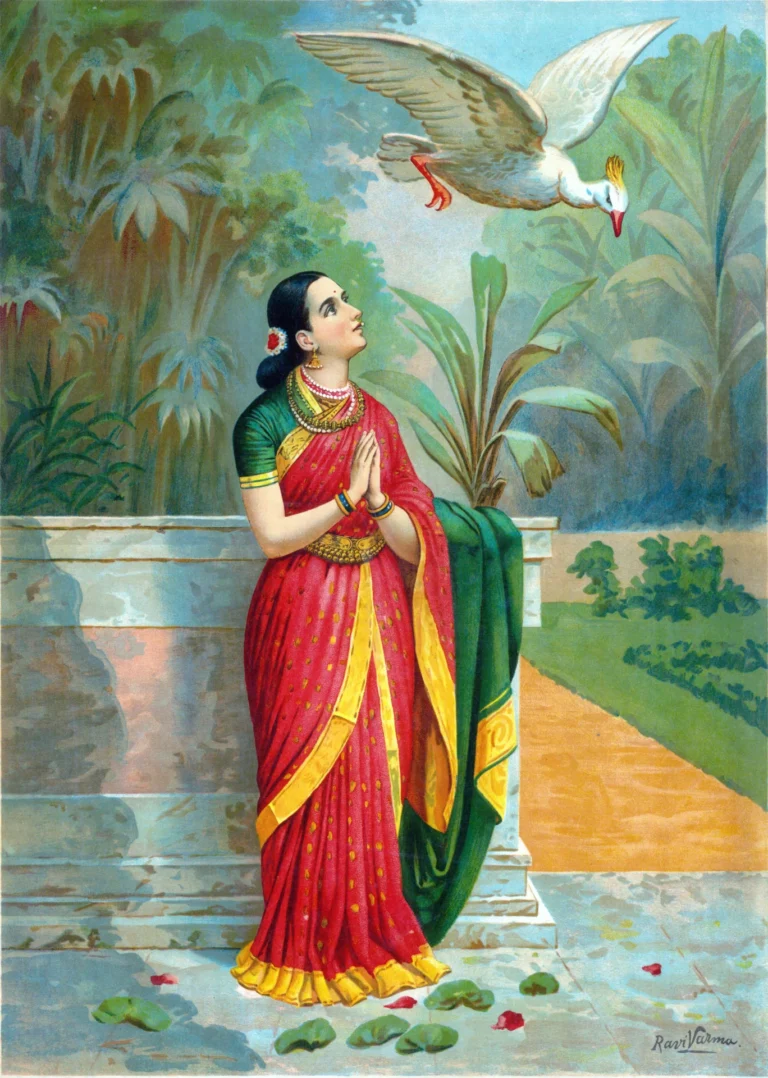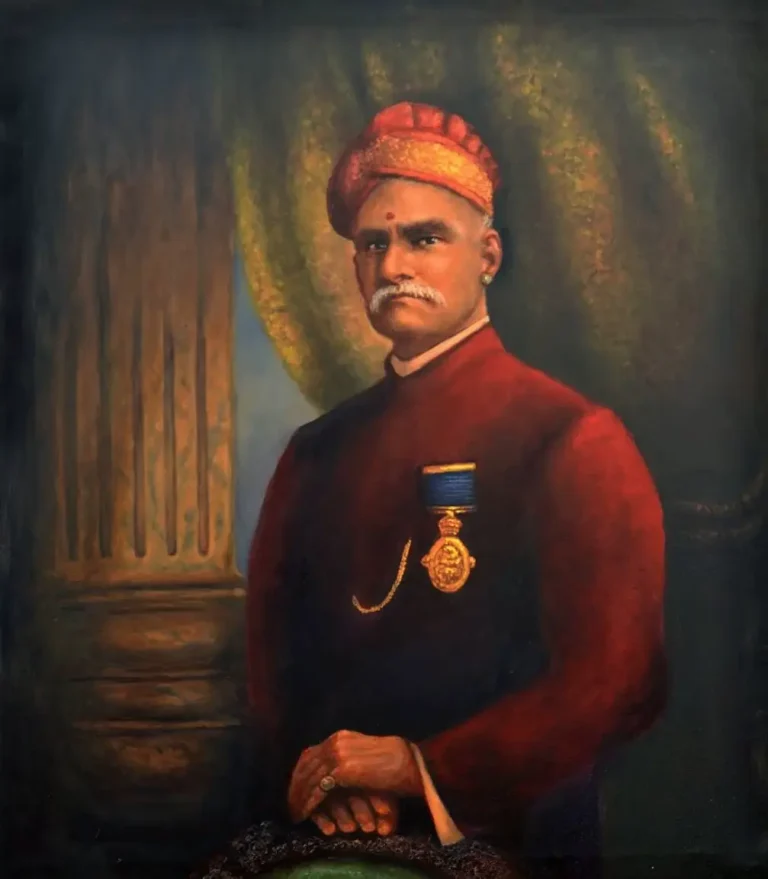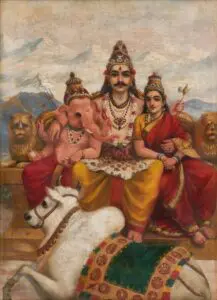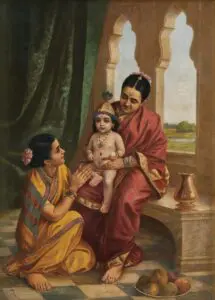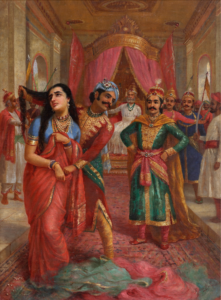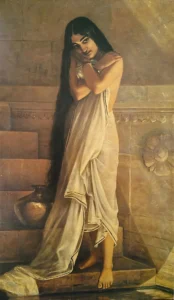Hamsa Damayanti Samwad
Raja Ravi Varma's Hamsa Damayanti Samvad is a mesmerizing artwork created in 1899, depicting a poignant scene from the Mahabharata. The painting beautifully captures the mythical conversation between Damayanti and a swan, which acts as a messenger in her romantic tale with Prince Nala. This piece is renowned for its vibrant representation of Indian epics using a blend of Indian and European art forms that Varma was famous for.
Year 1899
About the Artwork
Hamsa Damayanti Samvad’ draws from the Vana-Parva of the Mahabharata, a revered epic. In this narrative, Damayanti, the daughter of King Bhima, communicates with a swan, who conveys messages between her and Prince Nala. This facilitated their courtship and eventual romance. Raja Ravi Varma's depiction showcases his masterful integration of storytelling and art, meticulously presenting the intricate emotions of love and longing within ancient Indian mythologies. The painting reflects Varma's dedication to illustrating Indian culture and narratives, marking it as a significant part of his mythological series.
Did You Know
Raja Ravi Varma is celebrated for blending traditional Indian themes with Western art techniques, particularly European academic artistic styles, a fusion vividly seen in Hamsa Damayanti Samvad.
In Indian mythology, the swan or hamsa is considered a symbol of divinity and eloquence, often serving as a divine messenger, as depicted in the love story between Damayanti and Nala.
The Mahabharata, one of the world’s largest epics, serves as the backdrop for Hamsa Damayanti Samvad, emphasizing themes like love, duty, and destiny that characterize this ancient Indian narrative.




